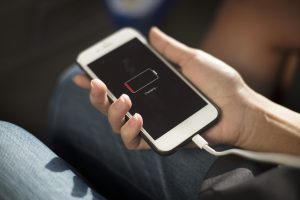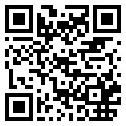Apple Advances their Fuel Cell Technology with a new ‘Fuel Cell State Information’ Control System

Apple’s first patent application covering the possible future use of fuel cells in iDevices and MacBooks surfaced in late 2011. Apple was granted their first patent for fuel cell technology in 2015 followed by a second granted patent in 2016 and a third in 2018. Today the US Patent & Trademark Office published a patent application from Apple that further advances their work on fuel cells in respect to Fuel Cell State Information. All of the additions are noted in the legalese of their latest patent claims as follows:
Apple’s Latest Fuel Cell Patent Claims Update
1. A portable computing device configured to control a fuel cell system, the portable computing device comprising: a processor; a memory; and an interface to the fuel cell system, wherein the interface comprises, a power link that provides power to the portable computing device; and a communication link that provides communication from the portable computing device to a controller for the fuel cell system; wherein the memory stores instructions that when executed by the processor cause the portable computing device to: receive fuel cell state information from the fuel cell system through the communication link; send fuel cell control information to the fuel cell system through the bidirectional communication link.
2. The portable computing device of claim 1, wherein the fuel cell state information specifies one or more of the following: how much power is available from the fuel cell system; a state-of-charge of an internal rechargeable battery within the fuel cell system.
3. The portable computing device of claim 1 wherein the fuel cell state information specifies one or more of a temperature of the fuel cell stack, a pressure at an inlet of the fuel cell stack, and a pressure at an outlet of the fuel cell stack.
4. The portable computing device of claim 1 wherein the fuel cell state information specifies a cell voltage for one or more cells in the fuel cell stack.
5. The portable computing device of claim 1 wherein the fuel cell state information specifies an amount of fuel remaining in the fuel source.
6. The portable computing device of claim 1, wherein the fuel cell control information specifies one or more of the following: a request for a specified amount of power from the fuel cell system; a fuel cell stack current to be pulled off a fuel cell stack within the fuel cell system.
7. The portable computing device of claim 7 wherein the fuel cell control information specifies a fan speed within the fuel cell system.
8. The portable computing device of claim 7 wherein the fuel cell control information includes a command to run diagnostics for the fuel cell system.
9. The portable computing device of claim 1, wherein the power link comprises a wireless link.
10. The portable computing device of claim 1, wherein the communication link comprises a wireless link.
11. The portable computing device of claim 1, wherein the communication link also communicates: computing device state information from the portable computing device to the fuel cell system; and computing device control information from the fuel cell system to the portable computing device.
12. The portable computing device of claim 11, wherein the computing device state information specifies one or more of the following: a power requirement for the portable computing device; and a state-of-charge of a rechargeable battery within the portable computing device.
13. The portable computing device of claim 11, wherein the computing device control information specifies a power state for the portable computing device, wherein the portable computing device uses the power state to control power usage of components within the portable computing device.
14. A method of controlling a fuel cell system operationally coupled to a portable computing device via an interface having a power link that provides power from the fuel cell system to the portable computing device and a communication link that provides communication between the portable computing device and a controller of the fuel cell system, the method comprising: receiving, by the portable computing device, fuel cell state information through the communication link; and sending, from the portable computing device, fuel cell control information to the fuel cell system through the communication link.
15. The method of claim 14, wherein the fuel cell state information specifies one or more of the following: how much power is available from the fuel cell system; a state-of-charge of an internal rechargeable battery within the fuel cell system.
16. The method of claim 14, wherein the fuel cell control information specifies one or more of the following: a request for a specified amount of power from the fuel cell system; a fuel cell stack current to be pulled off a fuel cell stack within the fuel cell system.
17. The method of claim 14, wherein the communication link also communicates: computing device state information from the portable computing device to the fuel cell system; and computing device control information from the fuel cell system to the portable computing device.
18. The method of claim 17, wherein the computing device state information specifies one or more of the following: a power requirement for the portable computing device; and a state-of-charge of a rechargeable battery within the portable computing device.
19. The method of claim 17, wherein the computing device control information specifies a power state for the portable computing device, wherein the portable computing device uses the power state to control power usage of components within the portable computing device.
Apple’s patent FIG. 2A presented above illustrates details of the internal structure of a fuel cell system.
Apple’s patent application 20180183123 was originally filed back in February 2018. Considering that this is a patent application, the timing of such a product to market is unknown at this time.
We noted last year that researchers at the Korea Institute of Science and Technology (KIST) have succeeded in developing core technologies for new flexible fuel cells that will power smartphones and smartwatches. The industry is racing to find new ways to extend battery life and Apple’s advanced work in this field may one day pay off.

